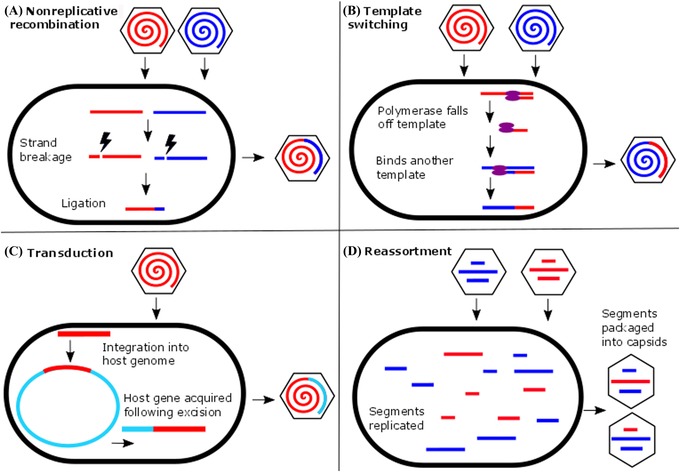Figure 2.

Major mechanisms of virus genetic recombination. (A) In nonreplicative recombination, nucleic acid strand breakage and repair permit the recombination of genetic material from different sources into the same viral genome. Recombination can occur between homologous or nonhomologous sequences and between coinfecting viruses or between virus and foreign nucleic acid strands. (B) In replicative recombination or template switching, a polymerase molecule changes template during the process of replicating a nucleic acid strand. If the templates are derived from different sources, then novel genetic material can be introduced into the virus genome. (C) During the process of virus integration and excision from a host genome, viruses can acquire genetic material from the host. These genes can increase infectivity or aid in host suppression. (D) Reassortment occurs following coinfection of a host cell by multiple segmented viruses. Replicated genome segments are packaged into procapsids irrespective of the parent of origin. In this manner, segments from two or more parents can be packaged into the same procapsid, giving rise to progeny that are genetically different from either parent.
